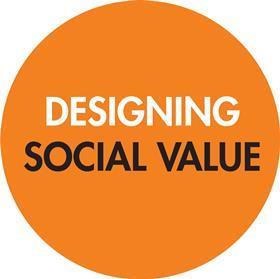Andrew Mellor outlines how local consultation altered a regeneration project in Truro

The concept of social value is rapidly becoming a mainstream concept for new developments in the UK thanks to the 2012 Social Value Act. This requires public authorities to consider societal impact when procuring services for contracts above a certain cost threshold.

Already we are seeing tenders for urban and town centre regeneration projects that set out specific scoring criteria for how social value will be integrated into the proposals and how potential contractors will be implementing social value strategies throughout the lifetime of the development.
One of the first invitations to tender that we were aware of with a major focus on social value in the bidding process was Cornwall council’s Pydar Street regeneration project in Truro. Of course, the social value focus was not just within the bidding process but was also a major requirement of the project deliverables.
Cornwall council has its own social value guide but it wanted a bespoke response for the mixed-use regeneration project. The development is to include housing for people of all ages, university accommodation, student halls of residence, retail, offices and leisure uses.
PRP was appointed in May 2019 to design the outline planning proposal for the regeneration. Pydar is a unique site bounded by a listed viaduct designed by Brunel, the Carbon river and the historic city centre and currently accommodates car parking, offices, retail and leisure uses.
At the bid stage we set out our vision for the social value strategy which included five key themes:
Thriving – promoting local jobs and inclusive economic growth;
Inclusive – providing the best opportunities for all, including vulnerable members of society;
Resilient – providing robust infrastructure and strong communities to build resilience to future climate and socio-economic change;
Environment – designing for resource efficiency, ecological enhancement and for better quality of life for future generations; and
Health – promoting physical health and mental wellbeing.
We undertook extensive research to understand the current socio-economic context using deprivation indicators and mapping which enabled us to develop a social value strategy and action plan that would be implemented through the feasibility and masterplanning stage of the project. We also nominated a design team social value champion from the outset and later, with the support of the community, appointed a community social value champion.
Through a series of themed workshops with the council, Falmouth University, other stakeholders and the wider community as well as more open public events we have been able to better understand the socio-economic needs and as a result refined our social value strategy.
This in turn has influenced the design options. One example is the concern that Truro city centre is not active in the evenings, particularly in the week as there is very little night-time economy.
The masterplan design proposals therefore include a varied mix of uses and planned population which will activate the development in the evenings: university facilities which can be used for community uses, student accommodation which will provide enhanced footfall, leisure and restaurant premises. The development will become a destination for those in Truro and beyond, with its own dynamic population. All this when combined creates activity and offers social wellbeing and economic and environmental benefit.
In addition to Cornwall council’s social value guide, we used other reference materials, including a very useful guide published by the UKGBC on social value in new developments. It identifies the following key themes that encapsulate the outcomes from successfully integrating social value into development proposals:
Jobs and Economic Growth – this includes aspects related to job creation, enhancement of local skills, career paths for school leavers, support for local supply chains, affordability and support for local businesses;
Health, Wellbeing and the Environment – this includes designing for good accessibility and sustainable transportation, climate-resilient buildings and infrastructure, placemaking and public realm enhancements, green spaces, good mental and physical health, measures to address indoor and outdoor air quality, and resource efficiency;
Community – this includes measures for the strengthening of communities through a strong integration with surrounding areas, facilities for encouraging social networks, diverse building uses and tenures, the creation of a strong local identity and distinctive character, and stakeholder engagement activities that create a sense of local ownership.
This guide is a very useful aid for all designers as social value needs to be at the forefront of the design process for new development even if it is not a formal requirement.
















No comments yet